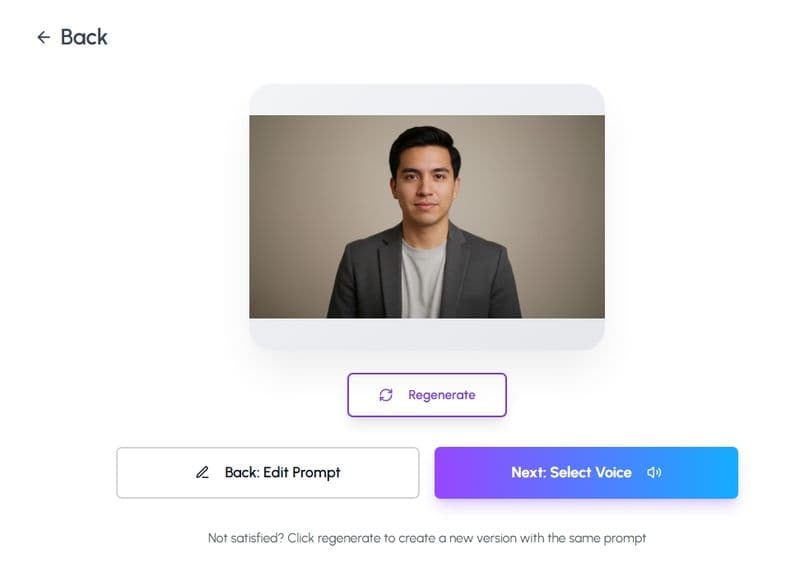
Video content has the power to captivate, inspire, and convert—but only if the message is crafted with precision. A weak script can lead to missed opportunities, while a well-crafted one can turn viewers into loyal customers. Whether you are working on promotional campaigns, explainer videos, or branded storytelling, your script determines how well your message resonates.
With the rise of AI tools like ChatGPT, scriptwriting has become faster—but speed alone will not make your video unforgettable. That is why a video marketing checklist for reviewing AI-assisted scripts is essential. This guide provides a step-by-step framework for ensuring your scripts remain engaging, clear, and aligned with your marketing goals.
👉 Ready to Master AI Script Writing?
Check out our Step-by-Step Guide to Iterative Prompt Refinement for tips on fine-tuning your AI-generated scripts like a pro.
10-step checklist for creating engaging video scripts
AI tools can generate scripts quickly, but they often lack emotional depth, storytelling flow, and audience-centered language. A structured review process helps identify these gaps while keeping your message on point.
This checklist simplifies the script review process into actionable yes-or-no and how questions, making it easier to ensure your video scripts are production-ready.
1. Clarify your objective and audience
Before focusing on creative details, the core purpose of the video must be clear. A video without a focused goal often confuses the audience.
Ask yourself:
Is the script written for a clearly defined goal? (e.g., lead generation, product education)
Does the script speak directly to the audience’s needs and preferences?
How well does the language reflect the audience’s values, age, and culture?
Is the message tailored for the platform where it will be shared?
✅ Pro Tip: If the audience feels too broad or the message seems vague, revisit the campaign brief and clarify your primary goal.
2. Review structure and flow for clarity
A well-structured script keeps viewers engaged from start to finish. It ensures ideas flow naturally and avoids information overload.
Check these structural elements:
Does the script begin with a compelling hook?
Are ideas presented in a logical order?
Do sections transition smoothly?
Is the video length suitable for the platform and audience attention span?
✅ Pro Tip: If the script feels disjointed, rearrange sections and test the flow by reading it aloud.
3. Check content quality and originality
AI tools can create content quickly, but originality and factual accuracy still require human oversight.
Use this checklist to ensure quality:
Is the content factually accurate and up to date?
Have all claims, quotes, and references been verified?
Is the language free from clichés and repetitive phrases?
Does the script offer unique insights or value?
✅ Pro Tip: If any section feels too generic, challenge yourself to add a unique perspective or example that reflects your brand voice.
4. Ensure consistent tone and language
The way your message sounds matters as much as what it says. Tone and language should be consistent with your brand and audience expectations.
Key questions to ask:
Is the tone appropriate for the video’s purpose? (e.g., conversational, professional)
Does the language feel natural and human, not robotic?
Are technical terms simplified or explained when necessary?
Is the script free from confusing jargon?
✅ Pro Tip: If the language feels too formal or dry, simplify sentences and focus on clarity over complexity.
5. Evaluate emotional impact and audience engagement
Emotionally compelling scripts leave a stronger impression on viewers. Whether through storytelling, humor, or empathy, emotional depth strengthens audience connection.
Ask yourself:
Does the script create an emotional connection with the audience?
Are there relatable moments or storytelling elements?
Are audience pain points clearly addressed?
Does the message inspire action or curiosity?
✅ Pro Tip: If the script lacks emotional impact, try adding personal stories, testimonials, or visual metaphors to deepen connection.
6. Check call to action (CTA) effectiveness
A video without a clear call to action often leaves viewers unsure of what to do next.
Ask these essential questions:
Is there a clear, singular call to action (CTA)?
Does the CTA align with the video's goal?
Is the CTA visually and verbally reinforced?
Is it direct and easy to follow?
✅ Pro Tip: If your CTA feels weak, simplify the language and focus on a single, direct action you want the audience to take.
7. Review technical elements for production readiness
Even the best-written script can fall short if the technical details are not production-ready.
Consider these elements:
Are visual instructions and camera directions clearly described?
Is the script's pacing suitable for the video length?
Are voiceover and dialogue instructions easy to follow?
Are captions, subtitles, and on-screen text clearly marked?
✅ Pro Tip: If the instructions seem vague, clarify them with specific camera angles, effects, or audio cues.
8. Ensure ethical AI use and content integrity
When using AI tools for scriptwriting, maintaining transparency and ethical standards is essential.
Ask yourself:
Has the use of AI tools been disclosed where necessary?
Is the content free from bias or stereotypes?
Have references and facts been cross-verified?
Are sources properly cited where needed?
✅ Pro Tip: If you notice any potential bias, consider diversifying the script's language and representation further.
9. Confirm collaboration and feedback integration
Collaboration helps refine video scripts and ensures they align with the creative brief.
Review the following:
Has the script been reviewed by all key stakeholders?
Has feedback been thoroughly considered and implemented?
Are all revisions documented for future reference?
✅ Pro Tip: If feedback seems conflicting, prioritize audience clarity and marketing goals above personal preferences.
10. Perform a final quality control check
A final review prevents costly errors and ensures the script is ready for production.
Ask yourself:
Has the script been proofread for grammar, spelling, and clarity?
Are all factual claims double-checked?
Have accessibility features like captions and subtitles been included?
Have you tested the script’s flow by reading it aloud?
✅ Pro Tip: If errors persist, consider a peer review or running the script through a proofreading tool before finalizing.
Why this video marketing checklist matters
Using an AI tool to draft scripts can be a game-changer for efficiency, but human creativity and oversight are irreplaceable. This video marketing checklist ensures your scripts balance both, making your content more professional, emotionally engaging, and audience-centered.
By asking direct yes or no questions along with a few how questions, you can catch content gaps early and deliver high-impact video content every time.
Create your first AI-powered video for free!
Personate AI offers 5 free credits, making it easy to start your AI-powered video creation journey. Try creating your first video today with these free credits and see how powerful AI can be in your video content strategy.
What do you think?
What part of video scriptwriting do you find most challenging? Share your thoughts in the comments below!
Pro Tip: Bookmark this checklist and share it with your creative team to streamline video script reviews for all your upcoming projects.


